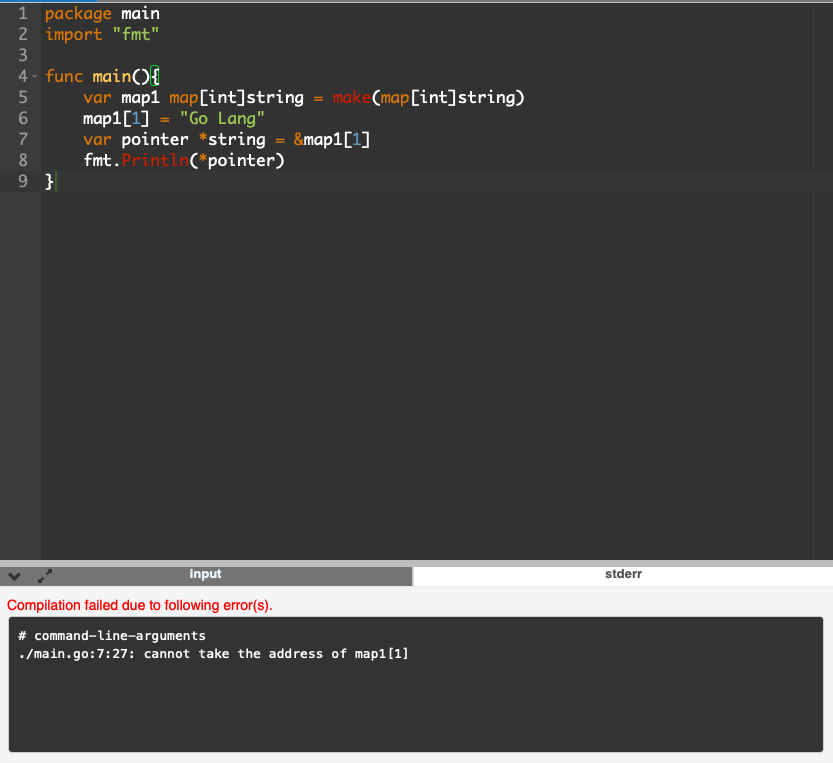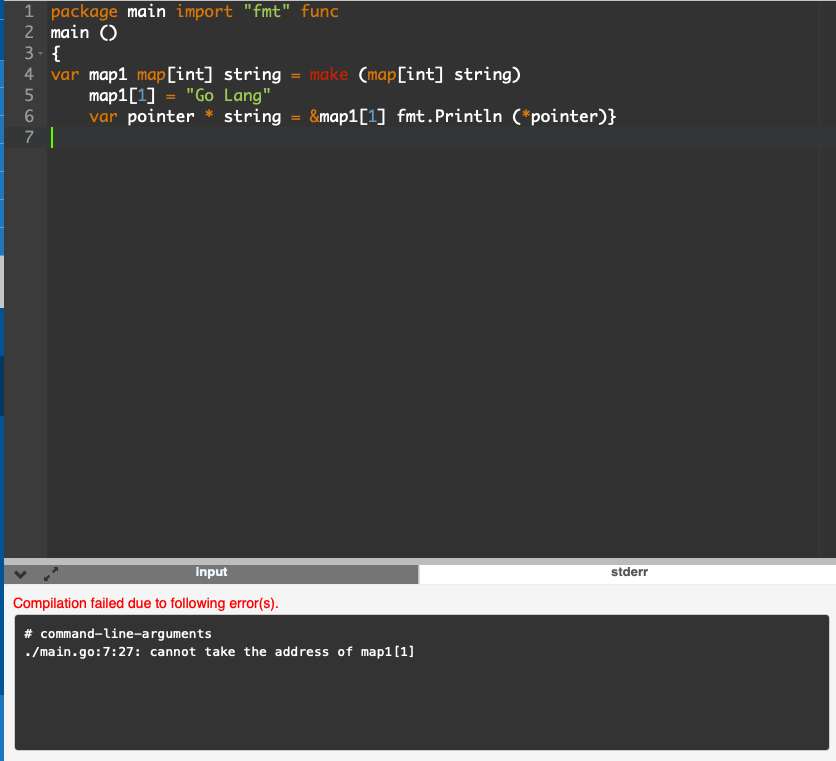Why map entries are unaddressable in Golang?
Go is an open-source programming language used to build software in recent years. Compared to C, it has a number of advantages, such as garbage collection, structural typing, and safety. Probably one of the most common errors in Go is Map entries are un addressable. If we are familiar with Hashtable, this can be avoided.
The Problem:
package main
import "fmt"
func main(){
var map1 map[int]string = make(map[int]string)
map1[1] = "Go Lang"
var pointer *string = &map1[1]
fmt.Println(*pointer)
}
Upon compiling the above code, you will receive the error that ./main.go:7:25: cannot take the address of mymap[1], and this can be resolved with knowledge of Hashtable.
The Solution:
As this code is an enumeration, we can use the pointer type as a value type to avoid this error. Since the hash table stores values in the bucket, a hash table can be restructured to solve this problem. We have inserted a new line in here, string1 := map1[1], which will store the String "Go Lang".
package main
import "fmt"
func main(){
var map1 map[int]string = make(map[int]string)
map1[1] = "Go Lang"
string1 := map1[1]
var pointer *string = &string1
fmt.Println(*pointer)
}
Reason
A Go map is also a hash map. Hash values at the key-value pairs in the entry determine the primary map bucket. If the primary map bucket overflows into the secondary map bucket, here it is implemented as an array of buckets. If the entries increase, the hash should provide more buckets, resulting in a larger array.
In the event that entries get deleted, the space is now reclaimed. Due to the self-organizing data structure and its dynamic nature, key-value pairs are not fixed, which means in GoLang, Map entries are unaddressable
As entires increase the hash should provide more buckets, which eventually lead to forming the larger array. If in case entries get decreased by deletion the space is now reclaimed. Due to the self-organizing data structure and its dynamic nature key-value pair is not fixed, so in GoLang the Map entries are unaddressable

 +1-760-465-2330
+1-760-465-2330


